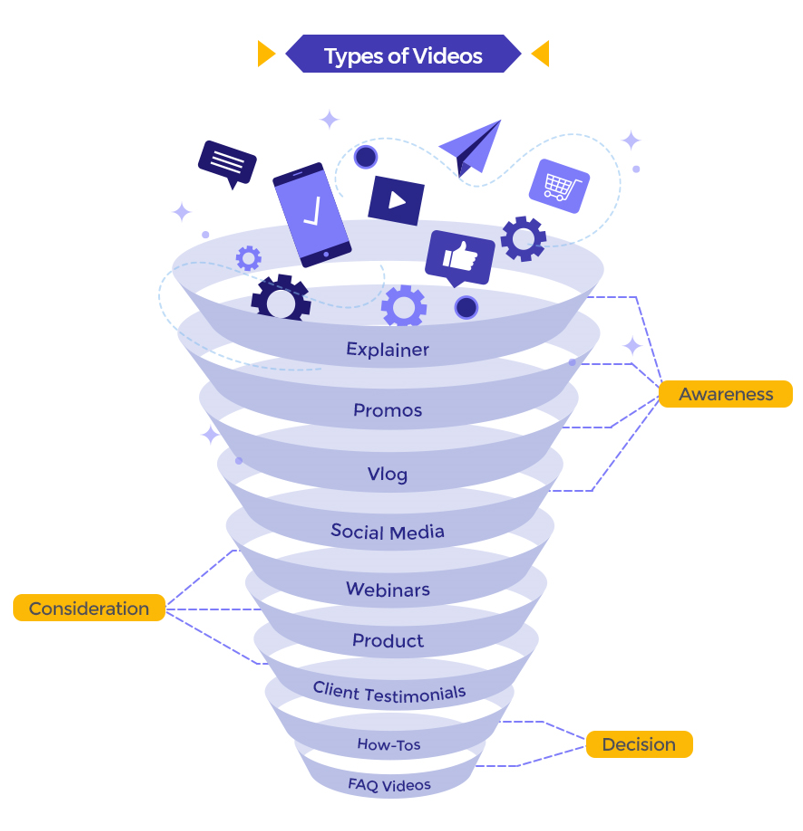“B2B does not mean boring marketing.”
– Beth Comstock, Businesswoman & Author
B2B Video Marketing in Numbers
- 70% of B2B buyers watch videos along their path to purchase. (Source: Google)
- 75% of executives watch work-related videos on business-related websites weekly and 52% watch work-related videos on YouTube weekly. (Source: Forbes)
- 91% of businesses use video as a marketing tool. (Source: Hubspot)
- 92% of video marketers reported that video gives them a positive ROI. (Source: Hubspot)
- 96% of marketers agree that videos have helped increase user understanding of their product or service. (Source: Hubspot)
- 62% of B2B marketers rate video as the most important content format. (Source: LinkedIn)
What Business Goals Does B2B Video Marketing Support?
- In terms of the metrics, the number of video views remains the most popular at 63%. (Source:Hubspot)This is followed by:
- Audience engagement (61%)
- Leads/click throughs (56%)
- Brand awareness (43%)
- Customer retention (42%)
- Bottom line sales (26%)
What Are the Benefits of B2B Video Marketing?
“Great content is the best sales tool in the world.”
– Marcus Sheridan, The Sales Lion
- People would rather watch the Internet than read it. In fact, 59% of B2B decision-makers say they prefer video over text content.
- Video has also been shown to boost website engagement by increasing page visits and average website visit durations.
- One study found that marketing emails with “video” in the subject line can experience improved click-through rates of up to 300%.
- Including the word ‘video’ in a blog, the title can also boost click-through rates.
- Adding video to a web page can significantly increase its search engine ranking and well-optimized YouTube videos can rank at the top of Google search results.

The 5 Stages of A B2B Video Marketing Campaign
1. Planning
During this stage, you will need to gather information and make decisions on a number of factors:
- Goals
- Budget
- Timeframe
- Target Audience
- Resources
- Constraints
2. Content & Design
- During this stage, you will have to write the script and decide on the CTA and design for the video.
- If you are struggling to come up with an original idea, why not repurpose an older piece of content such as a blog post or podcast.
3. Production
- In this stage, you will either create the video yourself or you can outsource production to professionals.
- Once you have created the video, you will need to decide where you will host the content. Some popular video hosting platforms include YouTube and Vimeo.
- If you intend to share the video on various channels, be sure you have several versions to suit each channel’s unique specifications.
4. Promotion
- Once the video is completed, you will need to promote it to your desired target audience through your assorted media channels.
5. Measurement & Analysis
-
- Analyze the metrics and see if they indicate particular areas of improvement and apply these learnings to your next campaign.
-
- The metrics you measure will depend on the goals that you set out at the start of the campaign:
| Goal |
Metrics |
| Awareness |
View count, watch time |
| Engagement |
Likes, comments, shares |
| Lead generation |
Subscribers, free trials, form fill-ups |
| Sales |
Conversions |
-
Next steps!
With this info, why not organise a shoot with us and speak directly to your audience, and if you don’t have an audience, use video content to create one! Here’s your next steps below:
